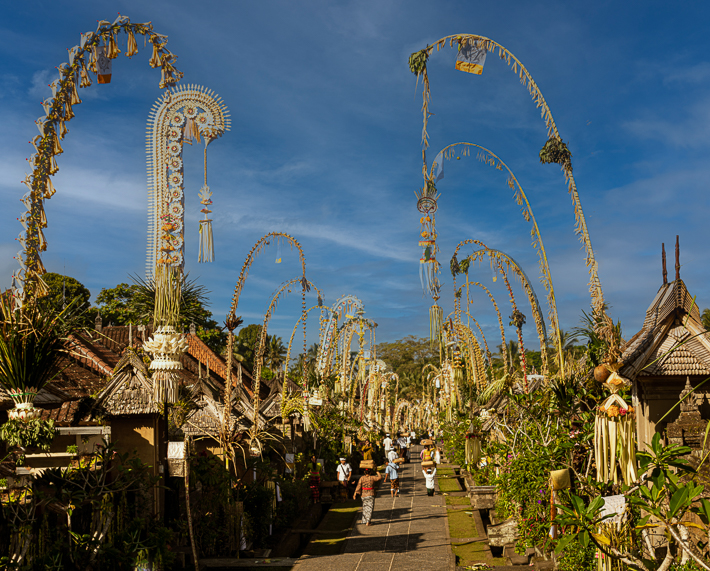
Galungan marks the beginning of the most important religious Hinud holiday that recurs every 210 days in Bali. It is like Christmas, where families come together to celebrate. The spirits of the people who have died and been cremated return to visit their former home, and the family has a responsibility to welcome them through prayers and offerings.
To be ready for the day involves preparing the elaborate decorations and offerings days in advance. The most predominant symbol of the celebration is the penjor, the bamboo poles with offerings which line the streets.
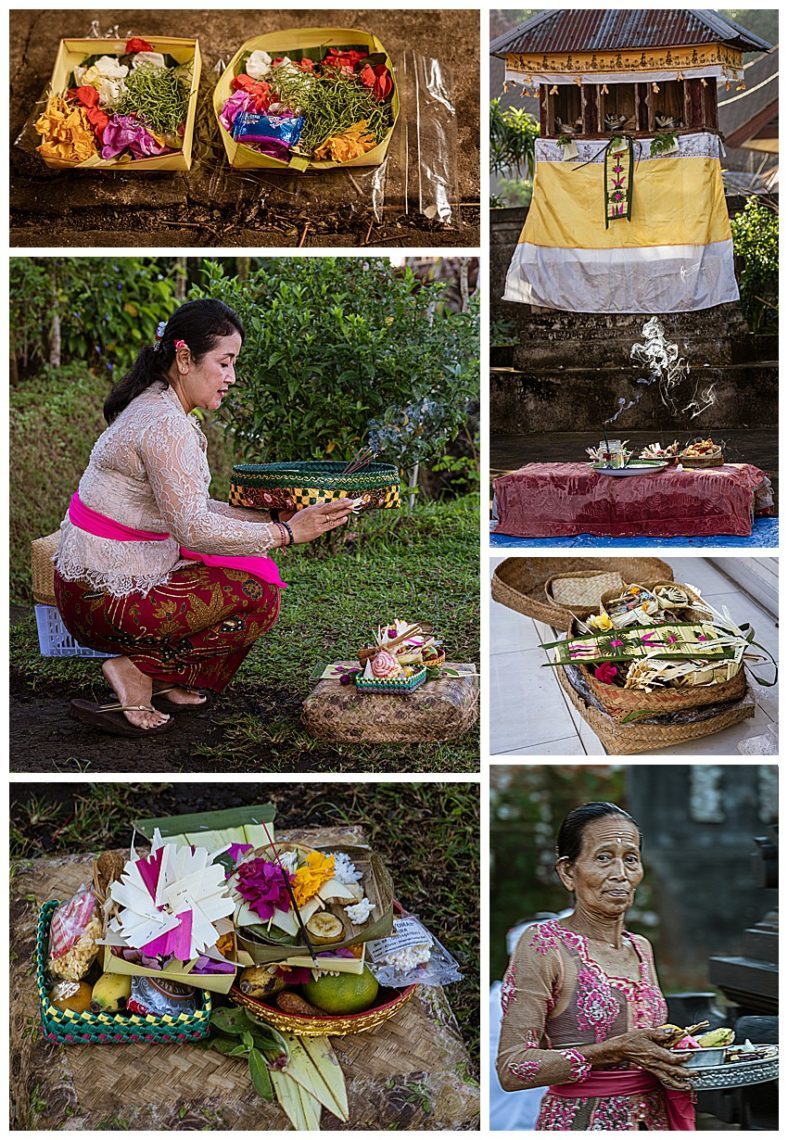
For several days leading up to the event, the women cook the banana and fried rice cakes, and prepare the fruits, flowers and other offerings. The offerings are an expression of gratitude to the gods, and are put out three times a day. Then, the day before Galungan Day, chickens and pigs are sacrificed to make a spicy salad.
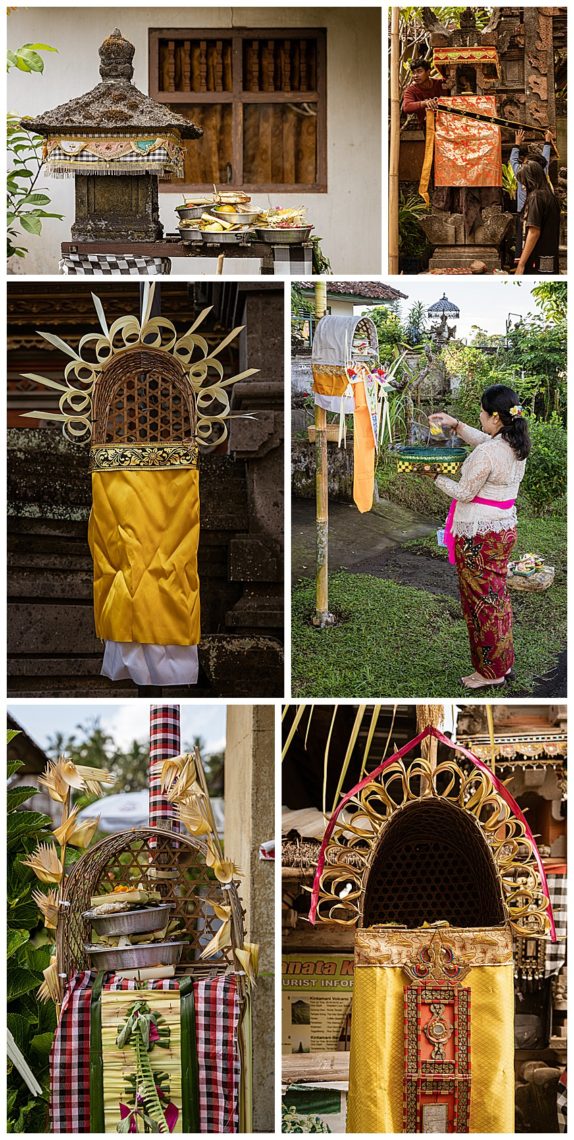
Every home is swept, and the statues and penjors are decorated.
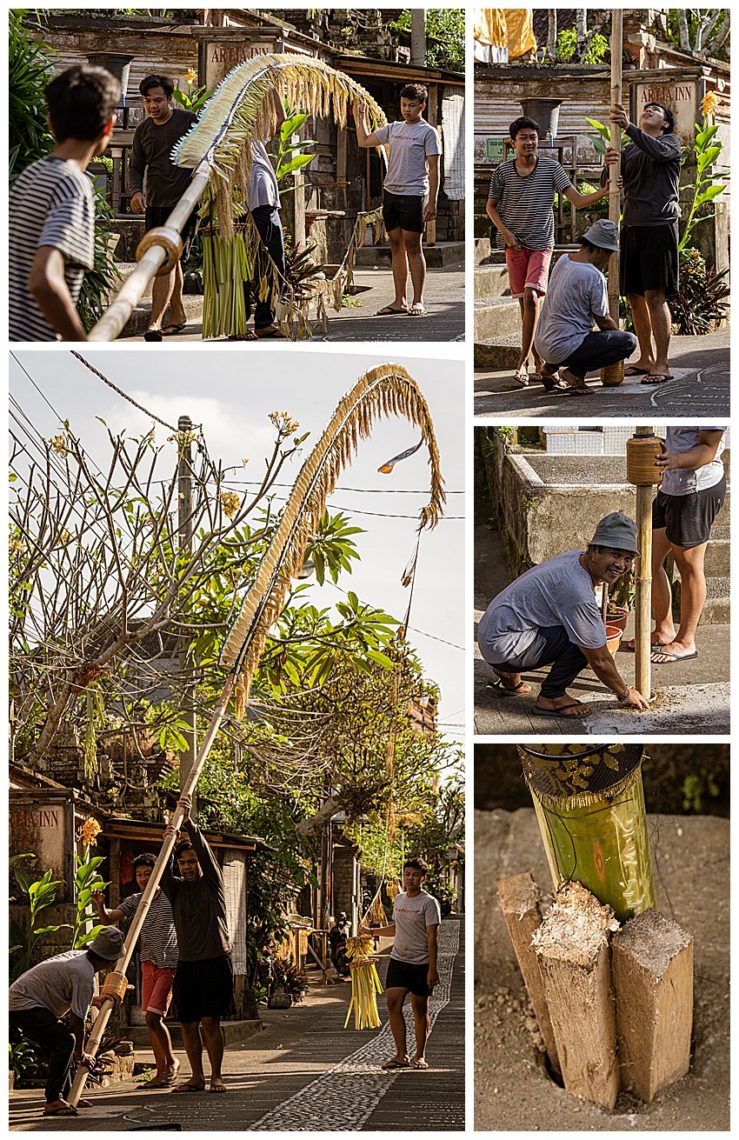
The day before Galungan, the penjors are hoisted into place along the streets. Here’s a sequence from preparing the hole, lifting a pole, setting it in place, then placing shims to prevent the 30-foot tall poles from falling. The housing for the offerings are put on afterwards.
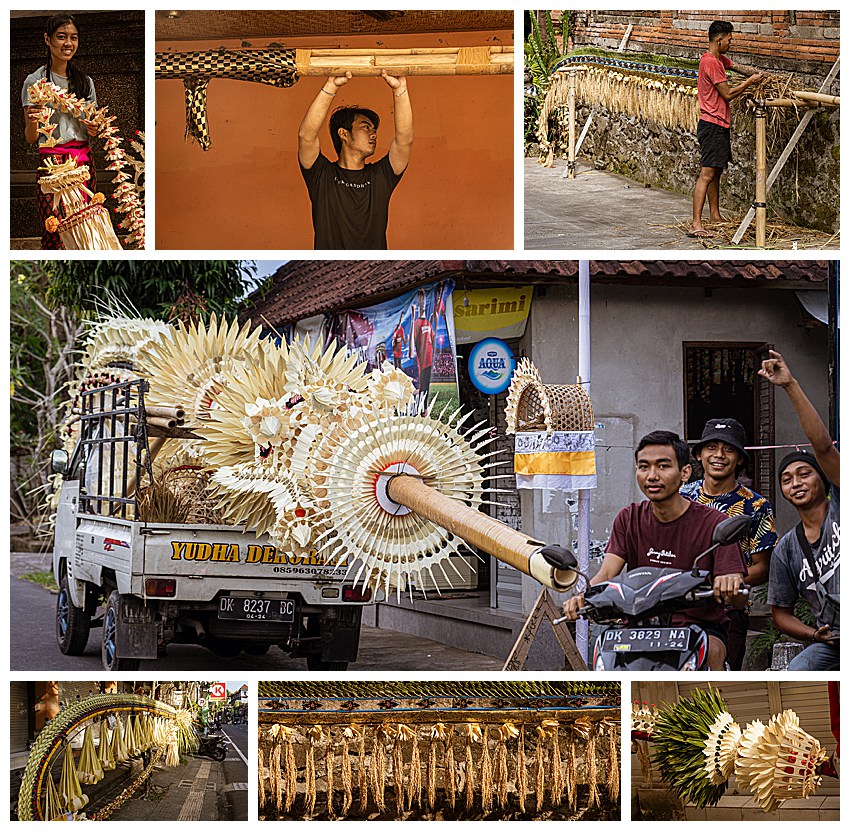
The penjors are elaborately decorated with various offerings, with rice (center bottom), palm leaves (bottom right), paper (top) and other colorful decorations. Those that are not created at the site where they will be raised are then transported by truck to their final destination (top).
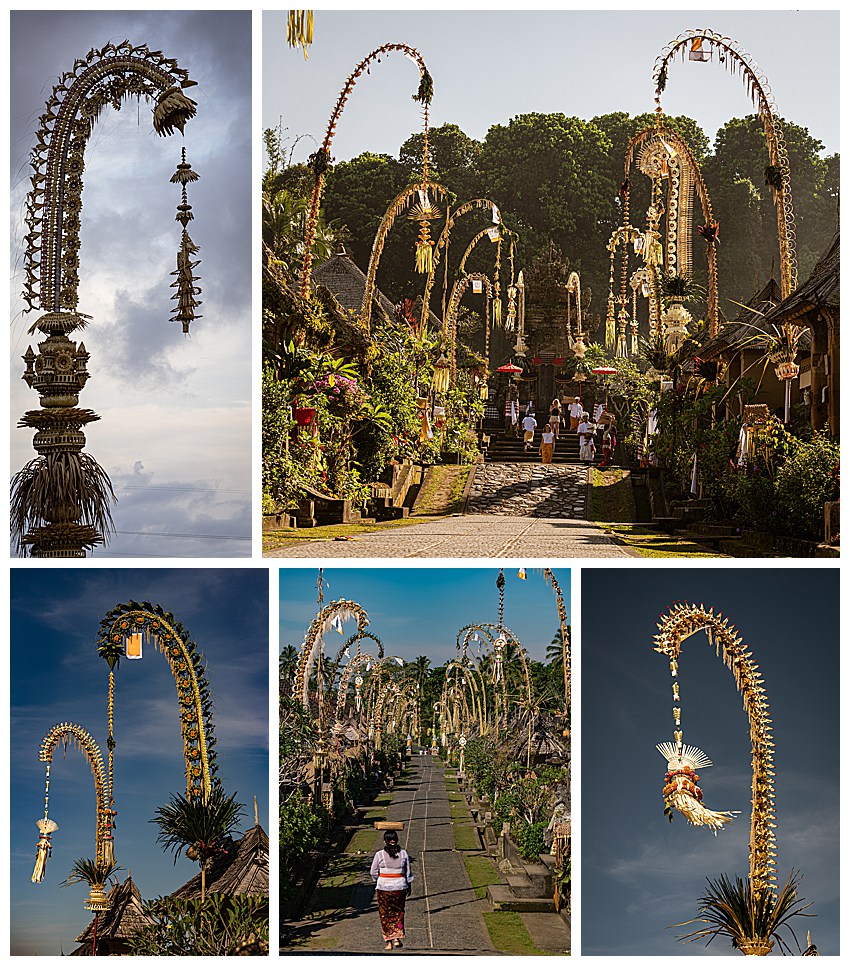
Penjors are seen lining the streets in every village in Bali. Almost every home will have a penjor in front of it (bottom-left), welcoming the spirits. Some streets are lined with dozens of penjors (top-right and bottom-center).